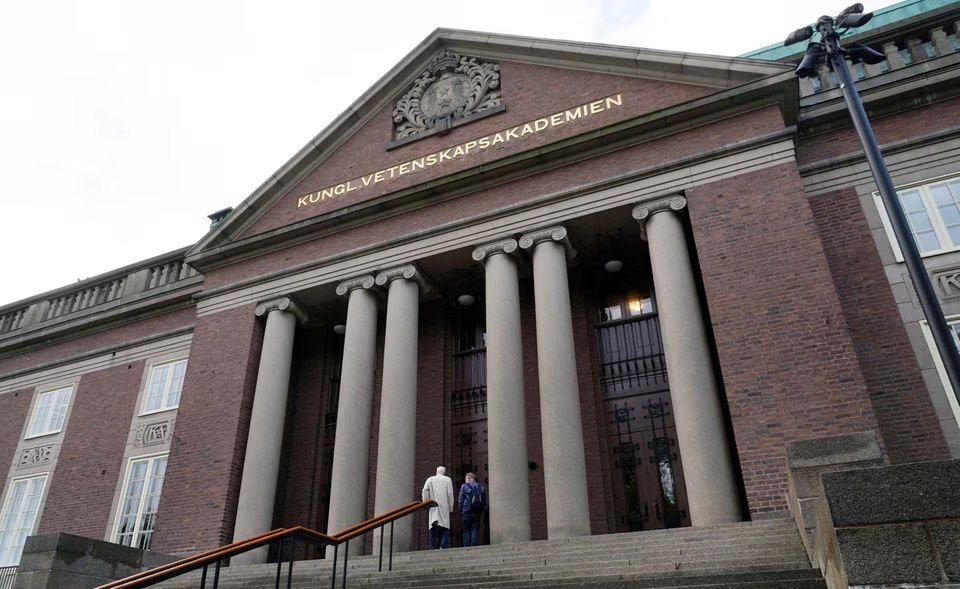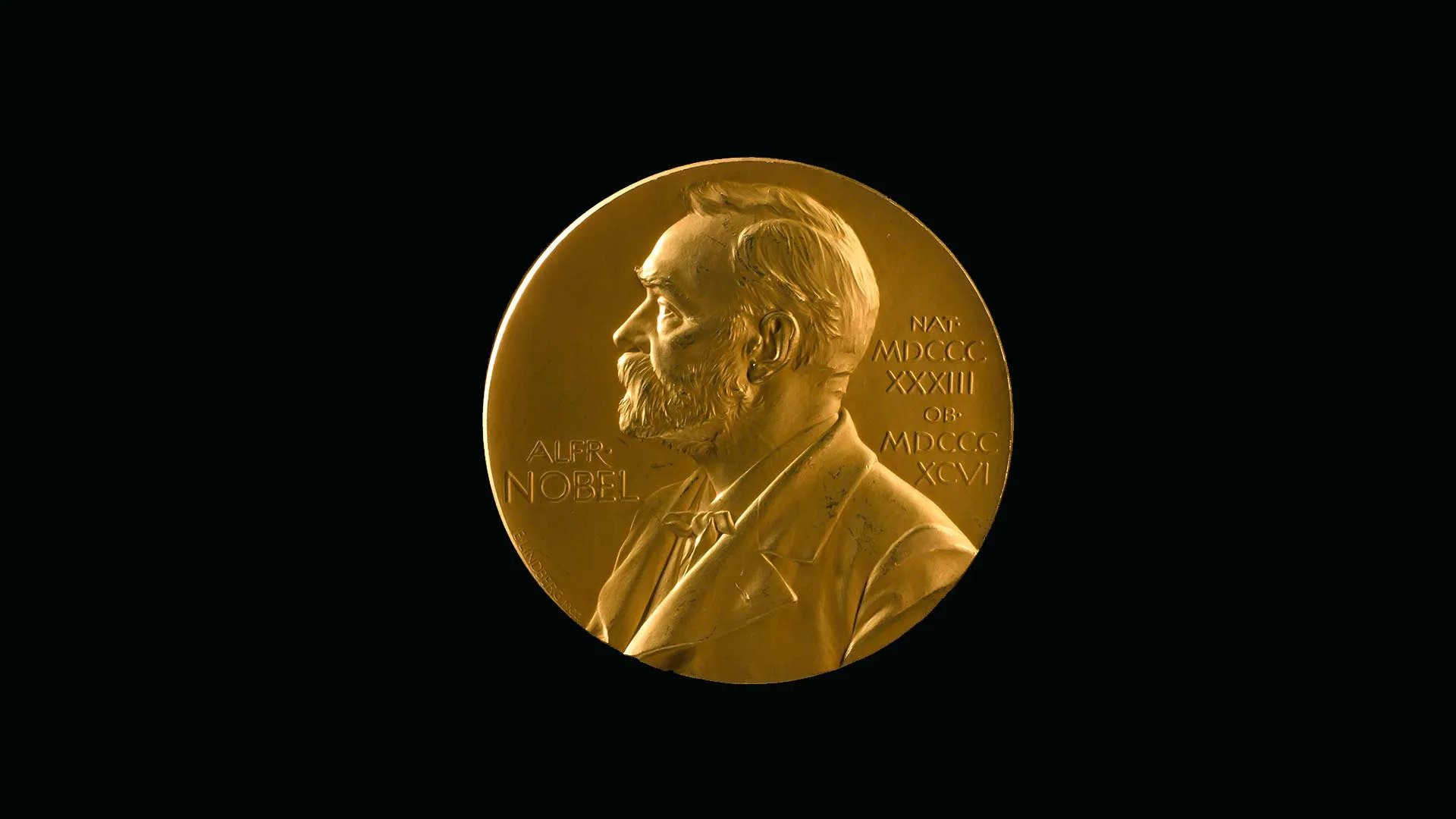Nobel Chemistry Prize Honors Innovators Amidst Early Announcement Controversy
Nobel chemistry prize honors innovators amidst early announcement controversy as three distinguished scientists were awarded for their groundbreaking research on quantum dots, minuscule particles with diameters measuring just a few nanometers.
Oct 05, 2023117.6K Shares1.6M Views

Nobel chemistry prize honors innovators amidst early announcement controversyas three distinguished scientists were awarded for their groundbreaking research on quantum dots, minuscule particles with diameters measuring just a few nanometers. These tiny wonders possess the remarkable ability to emit brilliantly colored light, and their applications span a wide range of everyday technologies, including electronics and medical imaging.
The recipients of this prestigious accolade are Moungi Bawendi from MIT, Louis Brus from Columbia University, and Alexei Ekimov from Nanocrystals Technology Inc. Their pioneering work with quantum dots has revolutionized the field, giving birth to particles with exceptional properties that now illuminate our lives through television screens and LED lamps. The Royal Swedish Academy of Sciences, based in Stockholm, made the official announcement of the award.
The Nobel Prize's customary suspense was disrupted this year when Swedish media preemptively revealed the laureates several hours before the official announcement. This premature disclosure appears to have originated from an inadvertent early release of a news statement.
Winners Of The Nobel Prize In Chemistry
Quantum dots are minuscule inorganic particles that exhibit a spectrum of colors, ranging from red to blue when exposed to light. The specific color they emit is determined by the size of the particle.
These dots can be engineered by scientists using materials like gold, graphene, and cadmium, with the color being controlled by precisely adjusting their size. The smallest particles, where electrons are confined most tightly, emit blue light, while slightly larger particles, where electrons move with longer wavelengths, emit red light.
Chemists often liken the size of these particles to a confinement box, drawing parallels to the fundamental "particle in a box" theory in quantum mechanics. Interestingly, this theory was initially formulated nearly a century ago, but it took several more decades for scientists to successfully create quantum dots in a laboratory setting.
During the 1980s, researchers Ekimov (age 78) and Brus (age 80) refined the theory and developed early laboratory methods for generating particles that could emit different colors by adjusting their sizes. In 1993, Bawendi (age 62) pioneered new chemical techniques for rapidly and consistently producing these particles. This breakthrough paved the way for a wide range of practical applications, including scalable commercial uses in electronic displays.
Judy Giordan, the president of the American Chemical Society, expressed her excitement about this year's laureates.
“„What we care about a lot in chemistry is being able to make and tailor novel structures and architectures to solve problems that help people and the planet- Judy Giordan
Rigoberto Advincula, a materials chemist working at Oak Ridge National Laboratory in Tennessee, noted that this research has played a crucial role in connecting the realms of physics and chemistry. He emphasized that the technology's widespread popularity is due to its simplicity and ease of replication.
Quantum dots have now become a standard component in electronic displays and biomedical imaging applications. Their fluorescent properties enable researchers to monitor drug delivery within the human body and to investigate the precise localization and growth of conditions such as tumors.
Premature Announcement Of The Winners
Swedish media had already reported several hours prior to Wednesday's official announcement that the Royal Swedish Academy of Sciences had prematurely issued a news release naming Bawendi, Brus, and Ekimov as the latest Nobel laureates.
Public broadcaster SVT disclosed that the release stated the reason for their Nobel Prize was the "discovery and synthesis of quantum dots."
Following the official announcement of the three laureates, Secretary-General Hans Ellegren announced that the Swedish academy would launch an investigation into how this information had been leaked in advance.
“„There was a press release sent out for still unknown reasons. We have been very active this morning to find out exactly what happened. This is very unfortunate and we deeply regret what happened.- Secretary-General Hans Ellegren
Johan Aqvist, who chairs the Nobel committee for chemistry at the academy said that there had been an error made by the Royal Swedish Academy of Sciences. He stated, "It is a mistake by the Royal Swedish Academy of Sciences. Our meeting starts at 0930 CET (0730 GMT) so no decision has been made yet. The winners have not been selected." The official announcement for this year's Nobel Prize in Chemistry is scheduled for 1145 CET (0945 GMT).
The academy responsible for bestowing the Nobel Prizes in physics, chemistry, and economics follows a meticulous process. They solicit nominations a year ahead, reaching out to thousands of university professors and scholars worldwide.
Dedicated committees for each Nobel Prize engage in thorough discussions regarding potential laureates during a series of meetings. Subsequently, they present one or more recommendations to the entire academy for a formal vote. It's important to note that these deliberations, encompassing the identities of all nominees except the eventual winners, remain confidential for a period of 50 years.
The Reaction Of The Winners
During a news conference, Bawendi expressed his profound emotions, stating that he felt "very surprised, sleepy, shocked, unexpected, and deeply honored." When questioned about the premature leak, he disclosed that he had no knowledge of being named a Nobel laureate until the academy contacted him directly. Bawendi also mentioned that, at the outset of his research on quantum dots, he hadn't contemplated the potential applications of his work.
"The motivation really is the basic science. A basic understanding, the curiosity of how does the world work? And that’s what drives scientists and academic scientists to do what they do," he said.
Brus, a professor emeritus at Columbia University, mentioned that he missed the early morning call from the Swedish academy when they attempted to inform him of the Nobel Prize.
"It was ringing during the night, but I didn’t answer it because I’m trying to get some sleep, basically," he told The Associated Press. He finally saw the news online when he got up around 6 a.m.
"I certainly was not expecting this," Brus said.
Brus expressed his satisfaction at the acknowledgment of the field of chemistry to which he has dedicated his work. He noted that the practical applications of quantum dots, such as their role in generating colors for flat-screen TVs, were something he had envisioned when he embarked on this research decades ago.
"Basic research is extremely hard to predict exactly how it’s going to work out," Brus said. "It's more for the knowledge base than it is for the actual materials. But in this case, it's both."
Ekimov concurred with this sentiment, attributing a portion of his success to the scientific curiosity that was nurtured in him during his years as a student and researcher in the Soviet Union in the 1980s.
"Back then, it was a career based on curiosity, not for making money or anything else," said Ekimov, the former chief scientist at New York-based Nanocrystals Technology, where he began working in 1999 after immigrating to the U.S.
On Tuesday, the Nobel Prize in Physics was awarded to French-Swedish physicist Anne L’Huillier, French scientist Pierre Agostini, and Hungarian-born Ferenc Krausz for their groundbreaking achievement in providing the first fleeting glimpse into the incredibly rapid realm of spinning electrons.
On Monday, the Nobel Prize in Medicine was bestowed upon Hungarian-American Katalin Karikó and American Drew Weissman for their pivotal contributions that paved the way for the development of mRNA vaccines against COVID-19.
The forthcoming announcements for the Nobel Prizes in Literature, Peace, and Economics will continue each weekday until Monday. Each Nobel Prize carries a monetary reward of 11 million Swedish kronor ($1 million), funded through a bequest established by the prize's founder, Swedish inventor Alfred Nobel.
Latest Articles
Popular Articles
